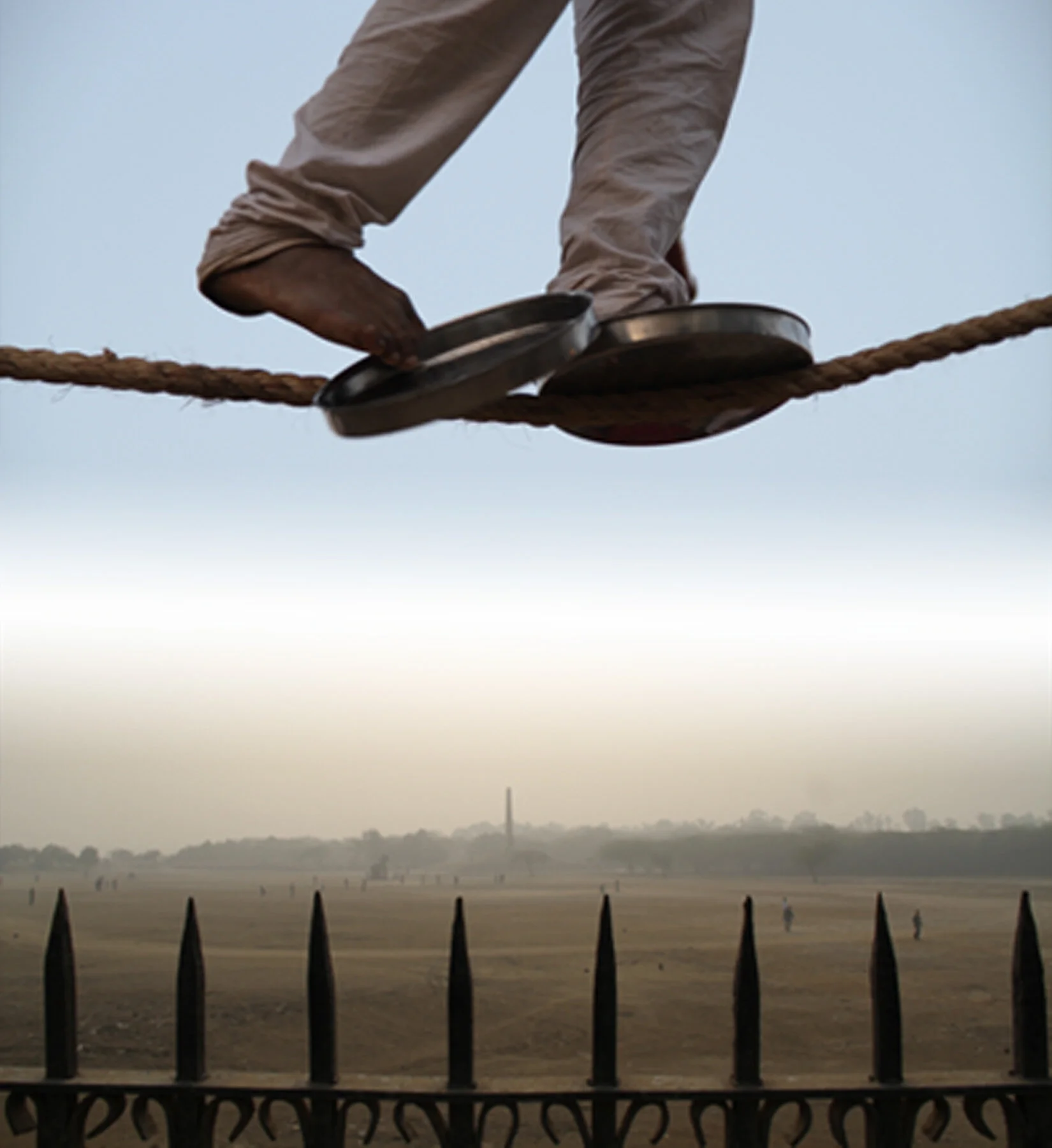PRE-FACE
About every ten years since I was born, I have gotten on a plane to India. First in 1979 visiting my grandparents, then in 1989/90 as a high school student, then in 1999 as an art teacher, then in 2010 and ’11 for many months of research and collaboration for this project in Delhi. My mother’s parents served as Methodist missionaries in India for 36 years from 1945 to 1981, much of that centered in Delhi. My mother and her four sibs were raised in India as children and left at 18. During those years in India, my mother’s family enjoyed the peculiar lifestyle created by so many western Christians living full-time in the sub-continent of Asia during the postwar era - a time when British influence was waning but American influence was increasing.
For Americans - like myself - who had grandparents that moved in the same circles as diplomats, bishops, vice-regals, prime-ministers, princes, sheikhs, national heroes, ‘mahatmas’ (great souls), and god-kings, we grew up in a robust sub-culture propelled forward by a sense of divine purpose. In my home growing up, there was the ever-present buzz of a thriving, post-war international network of professional Christians, all keeping in close touch by telegram, hand-written letters and glitchy phone calls, all closely aligned to the same crystal clear goals, all mutually supportive in the midst of radical global change, all undeterred by ‘hardship’ or ‘sacrifice’, and all drenched in Western privilege. As a result, my mother’s side of the family has 150+ combined years of life experience in India. This is not including the step-side of the family by way of my grandfather’s second marriage to an Indian national from Lucknow. All that to say, I have been affected and influenced by India in ways that are difficult to un-pack. For years, I have felt that the least I could do was to try and educate myself about the place that is, for all intents and purposes, my mother's ‘ma desh’ - motherland. Mega-Delhi is my first real attempt at responding to this strange inheritance using an art project.
In 2010, thanks to funding from a Creative Capital Award and an opportunity to be an artist in residence at a gallery in Shahpur Jat, I was able to spend six months in Delhi over a two-year period creating a project with a flexible scope. I knew I wanted to find a location in the city that was imminently facing radical change and curate various details from the site using unfettered research, extensive conversation, and chance discovery - all with the goal of presenting the final material in some immersive or interactive way. The location in Delhi that epitomized this criteria of a site facing radical change turned out to be a place I had visited ten years earlier: Kathputli Colony or the ‘Colony of Wooden Dolls’ - an informal settlement of traditional performing artists or kalakars. Returning after a decade, I found that the colony had grown and maintained its uniqueness despite a city threatening to swallow it whole.
Mega-Delhi has subsequently been presented as a video Installation, a performance of video with live narration, and now this on-line essay film.
The operative word here being ‘essay’.
The location and the inhabitants featured in this project, ie the ‘kalakars’ (artists) of Kathputli Colony, have been documented extensively over decades; and so, my contribution to capturing this incredible built environment is avidly less orthodox. Catherine Lupton best reflects my approach when she describes the genre of essay films as a form that , “depict[s] the process of thinking around a given subject, with all its attendant messiness, hesitations, and sudden insights intact.”
As for my connection to the community, I worked with NGO SARTHI (Chariot) and the Bhule Bisre Kalakar Cooperative (Coop for Forgotten Artists) and offered a pro-bono scope of design work for Rajiv Sethi of the Asian Heritage Foundation in exchange for access to their in-depth historical material and personal accompaniment while filming in the community itself. That said, this obscure corner of the Colony soon led to other obscure corners of the larger city and I allowed the project to sprawl.
It is important to note that, when Mega-Delhi started in 2010, I was newly enthralled by what I saw happening in the broader artist community in Delhi at that time: Scholars and artists lovingly eviscerating the city - its culture, semiotics, and urban ecology - using everything from video installations and public art to comic books. This project was developed with the support, guidance, conversations, and collaborations with the following:
-Ruchika Negi and Amit Mohanti of Frameworks Collective
- Mohammed Ayaz Ahmed and Mohammed Imran of SARTHI
- Bhagwati Hatwal and Rajeev Sethi of the Asian Heritage Foundation
- Samir Bhat, Raju Bhat, Ramesh Tandon, Bhanvar Lal, Ishammudin Khan, Santosh Bhat, Birju Bhat, Puran Bhat, Gyarsa Nat, of the Bhule Bisre Kalakar Collective
- Ravi Sundaram, Dipu Sharan, Iram Ghufran, Ravi Kant of Sarai and The Center for Study of Democratic Societies (CSDS)
- Latika Gupta and Aastha Chauhan at KHOJ Studios
- Rahaab Allana, Akshaya Tankha, and Pramod Kumar at the Alkazi Foundation for the Arts
- Ajay Kumar and O.P. Jain at INTACH
- Dr. Narayani Gupta
- Prof. M. Shaheer
- Sangeeta Angela Kumar
- Special thanks to the team at Reflections Gallery in Shahpur Jat where I had my first residency: Stefan Eicher, Vikhor Tepa, Salhou Tepa, Mythili Poojari, and Prittam Priyalochan.
